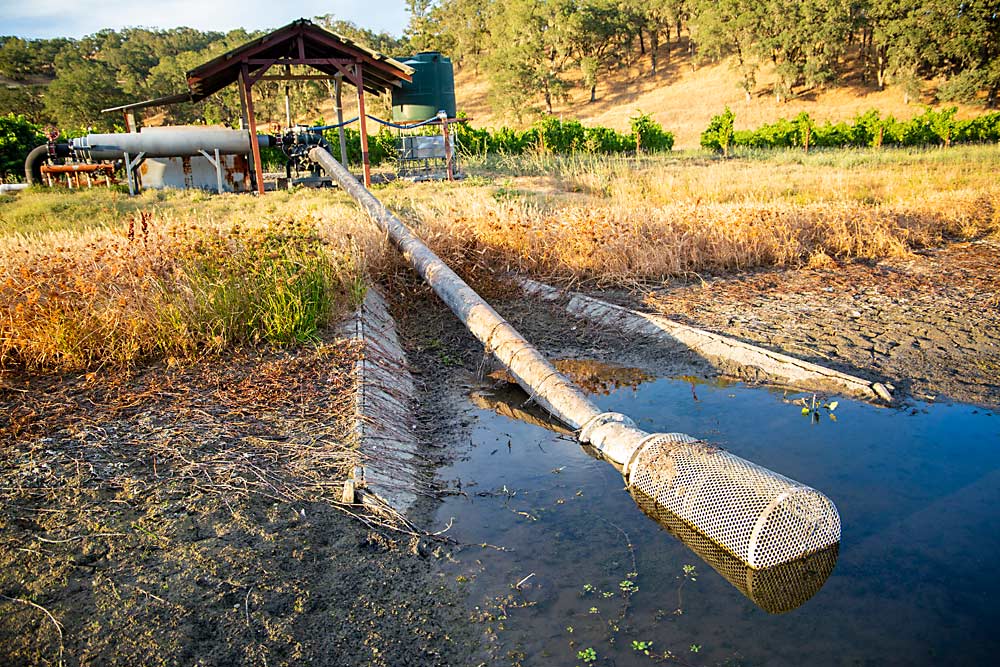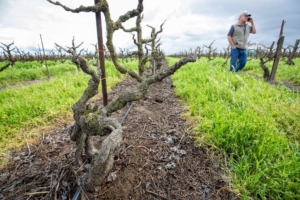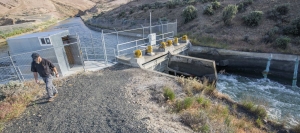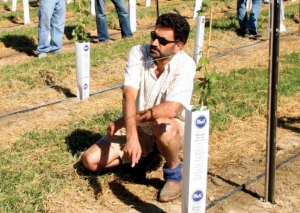
Editor’s note: This story has been updated from the original print version to include the correct country of origin for Zinfandel.
In drought-stricken parts of California, grape growers know a few things about growing wine grapes with very little water. Two growers, Lorenzo Pacini of Mendocino County and Matt Dusi of Paso Robles, recently shared with Good Fruit Grower some strategies for weathering drought.
Pacini’s family raises ultrapremium wine grapes on limited, or in some cases, zero irrigation in Mendocino County. So, he’s used to drought.
But climate change is bringing those conditions to more growers, whether they are accustomed to them or not.
“You can’t just say, ‘We’ve always done this,’” said Pacini, a fourth-generation grower. “We’re used to farming with 50 inches of rain per year.”
From November 2020 to mid-September 2021, the region received only 11 inches, he said. He has one small dry-farm planting his crews watered by bucket this year.
Pacini doesn’t pretend to know other growing regions’ conditions, but he has a few bits of advice for anyone growing grapes in water-scarce areas:
—Choose the correct varietals: Italian varietals such as Sangiovese and Nero d’Avola work well. So does Zinfandel, a Croatian variety.
—Droughts don’t happen overnight, so plan ahead if one is on the horizon. Thin shoots more aggressively to prepare for an expected water constraint. You may get less yield, but the fruit you leave will be better supported by the vine.
—Remove secondary, or late development, clusters early. That will focus carbohydrate production into primary, or earlier developing, fruit.
—Go easy on the leaf removal: In his opinion, California growers leaf-pull too aggressively, leaving too little leaf surface area for photosynthesis to provide the necessary carbohydrates. Leaf pulling is important to increase airflow and reduce mildew, but tweak the balance in dry years. “In a year you don’t have any water, you want more leaves. You may lose them naturally,” he said.
—Look at each vineyard’s needs individually and respect its soil and microclimate. “You can’t just farm like you’re following a recipe, because it’s too dynamic,” Pacini said.
Dusi, also a fourth-generation grower, manages grapes for his sister’s winery, J Dusi Wines.
The Paso Robles American Viticultural Area on California’s Central Coast averages 18 inches of rain. Last year, it received six, “which is like a desert,” he said. He has some dry-farm vineyards, while his irrigated vineyards are rationed to four hours of water per week.
“The biggest thing is to plan ahead,” he said. Make decisions about crop load management, pruning and even planting with water restrictions in mind. For example, he suggests keeping some acreage unplanted as a water bank.
Here are a few more tips from Dusi:
—Consult with your nursery about rootstocks that reach deep.
—He discs soil in spring after rain to create a “fluffy” layer to protect ground water.
—He does not plant a cover crop in the rows, to avoid competition.
—Thin early and more aggressively in times of water scarcity, something he does every year, he said. This year he heard of a lot of vineyards in the state dropping fruit. If a crop is too bountiful, the vines won’t be able to ripen the fruit and the grower could lose the whole thing, he said. “Make sure you get something to the finish,” he said.
—Plant varieties that handle the heat. This year’s heat waves hit hard in his Mourvèdre, Petite Syrah and, to a lesser extent, Syrah, blocks. A nearby block of Grenache? “It looks great,” he said. Tannat also fared well, he added.
—by Ross Courtney









Leave A Comment